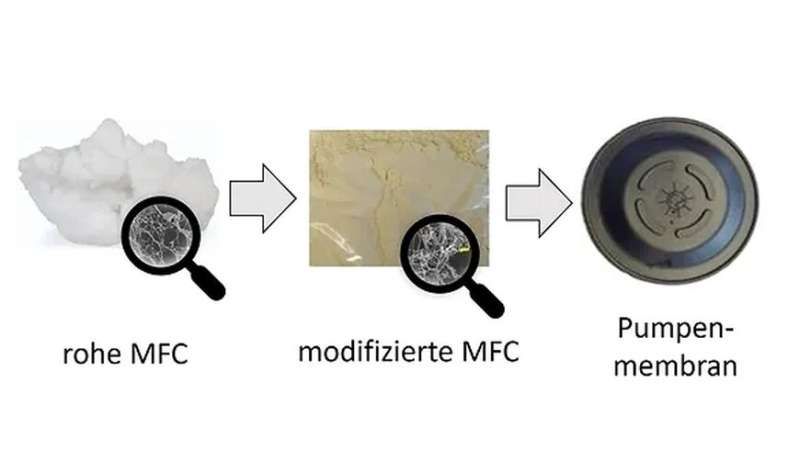Renewable cellulose-based fillers have potential to increase sustainability of rubber products


The substitution of petrochemical materials with those obtained from renewable raw materials is an important step towards increasing sustainability. Materials derived from plant cellulose are promising candidates for this application area. They are renewable, abundant and have a low environmental impact. In the rubber industry, microfibrillated cellulose (MFC) is receiving a lot of attention due to its high stiffness, the morphology of its fibrils, its low density and its mechanical properties. Thus, it has a high potential to improve the properties of rubber compounds.
However, it is a challenge to blend MFC with hydrophobic, i.e. water-repellent, rubbers. Together with its development partner Empa, Daetwyler has developed an industrial process for the surface modification of MFC to solve this challenge. Initial trials involved replacing petrochemical aramid fibers with modified MFCs.
The results show good compatibility between the MFC filler and the rubber matrix with strong reinforcing effects, even better than those achieved with conventional petroleum-based aramid fibers. The development of these novel fillers will be an important step towards increasing the sustainability of rubber products such as pump diaphragms.
Two years from research to industry implementation
In just two years of intensive and open collaboration between Empa and the Datwyler Schweiz AG as part of an Innosuisse project, a process was successfully developed that brought together the worlds of cellulose and rubbers. In this short time, it was possible to cover the entire arc from research to industrial implementation.
“This project is a very good example of how valuable Innosuisse’s support is for such successful innovation projects, which not only strengthen and economically advance the companies themselves through novel products and processes, but ultimately also the entire location of Switzerland,” says Empa researcher Thomas Geiger.
Explore further
Ming Liu et al, Production of microfibrillated cellulose fibers and their application in polymeric composites, Nanotechnology in Paper and Wood Engineering (2022). DOI: 10.1016/B978-0-323-85835-9.00003-9
Citation:
Renewable cellulose-based fillers have potential to increase sustainability of rubber products (2022, October 19)
retrieved 19 October 2022
from https://phys.org/news/2022-10-renewable-cellulose-based-fillers-potential-sustainability.html
This document is subject to copyright. Apart from any fair dealing for the purpose of private study or research, no
part may be reproduced without the written permission. The content is provided for information purposes only.

